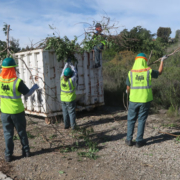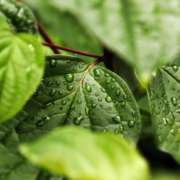San Diego Projects Improve Water Quality, Fish Habitat
Two projects underway will enhance fish habitat and water quality at Murray Reservoir.
The reservoir in Mission Trails Regional Park is owned by the City of San Diego and operated by its Public Utilities Department.
“As stewards of the area, it is important for us to improve and enhance the environment in and around Murray Reservoir,” said Shauna Lorance, director of the San Diego Public Utilities Department. “Working closely with state and local agencies allows us to better achieve this goal.”
Removing invasive plants
Over the next six months, the Urban Corps of San Diego County will remove non-native plants and trees along Airoso Avenue to Murray Dam as part of the Chaparral Canyon Habitat Restoration Project.
The removal of invasive plants and native habitat restoration will directly benefit the City of San Diego and the San Diego River Conservancy by improving water quality in the San Diego River, reducing the canyon’s vulnerability to wildfires.
Funding for the $382,513 project comes from the San Diego River Conservancy and the California’s Water Quality, Supply and Infrastructure Improvement Act of 2014.
Improving fish habitat
In addition, the city is working with California Department of Fish and Wildlife on a fisheries habitat enhancement project at Murray Reservoir through June 2020. The project is intended to increase fish abundance and angling opportunities for the public by adding fish habitat structures to the reservoir.
The fish habitat structures, including brush and synthetic materials, will provide the type of physical cover that several fish species prefer to nest near. The new structures are intended to increase reproduction and provide additional areas where juvenile and adult fish can avoid predation.
Murray Reservoir is open daily from sunrise to sunset and closed on Christmas and New Year’s Day. A valid California Fishing License is required for anglers 16 years of age or older.




